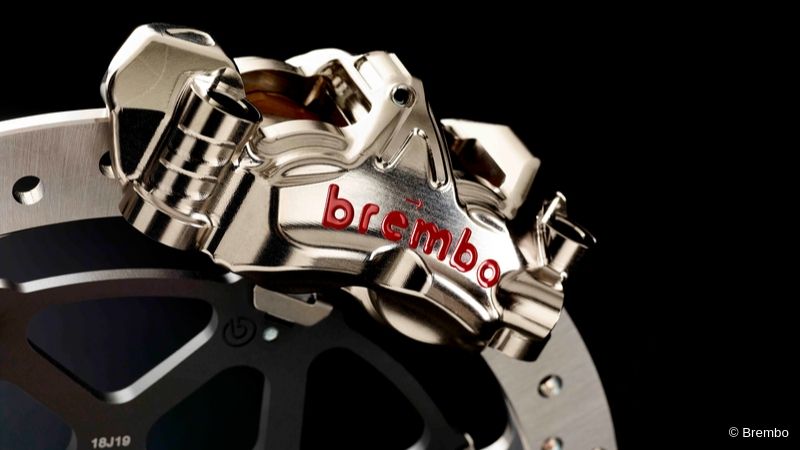
At Misano, during the San Marino GP, we met Roberto Pellegrini, Brembo's Sales Manager for the motorcycle racing market. On this occasion, Pellegrini explained how Ego Corsa's braking system was designed and developed for the MotoE World Cup. Brembo's manager tells us that the first contacts between Dorna and Brembo on the MotoE project were on 2017. Among the requirements for the selection of the braking system, one of the most important was the containment of costs, essential for Dorna to be able to develop a completely new class.
Brembo had already faced one of the most important changes in the world championship in 2002: the transition from 500cc with 2-stroke engine to MotoGP with 4-stroke engine. In that case, the change, although significant, had occurred in continuity, while the MotoE represents a challenge with unprecedented characteristics. The braking system has to deal with a new variable: weight.
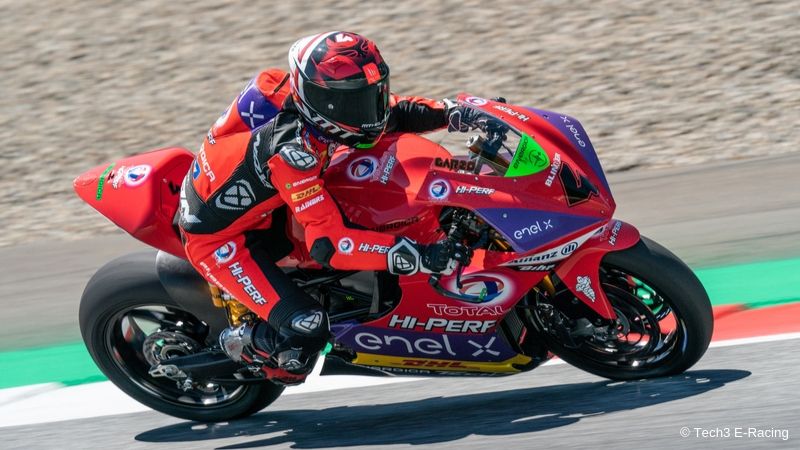
In forty years of circuit racing in all the main categories, from the MotoGP to the Superbike, passing by 125, 250, Moto2 and Moto3, the problem of braking a 260 kg bike had never occurred. The current MotoGPs have a minimum weight of 157 kg; this means that the difference between the two categories is around 100 kg. In practice, a MotoE is 60% more heavy than a MotoGP.
The first searches take place among the series products but the need for an ad hoc product for a motorcycle with the characteristics of the Ego Corsa of Energica. Brembo thus decides to create a specific braking system and develops it through a series of joint tests with Energica over the course of 2018.
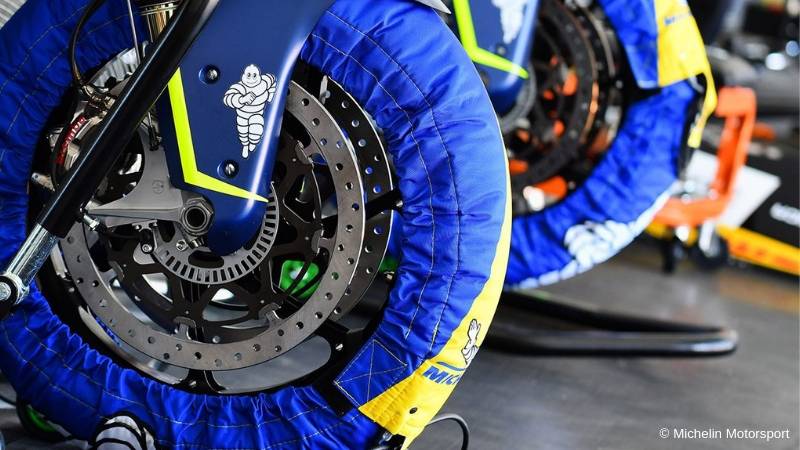
Pellegrini recalls that the first steps in the 2018 spring were not really encouraging. In June, 2018, however, during a series of tests on the Dutch Assen track, good indications come and show which way to go in the development. At that stage, the critical element to be overcome was the operating temperature of the disks, which was still too high. Thanks to the work in the following two months, at the GP in Austria, in August, the definitive braking system is consolidated, that for the 2019 season.
In motorcycles, everything is a matter of balance and every component influences all the rest. So it was also for the braking system of the MotoE, which has reached its definitive configuration together with the adoption of the Marchesini 7 spokes aluminium forged 3.75 × 17 inches front wheel, thanks to which a greater braking stability has been achieved.
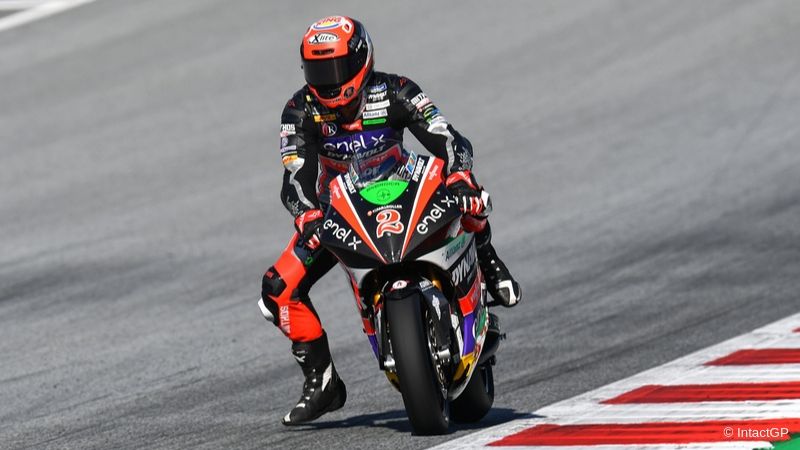
In the tests carried out in the autumn of 2018, the complete range of system performance was tested, verifying the absence of fading in all conditions and bringing braking to the rear wheel lifting limit. At that point the project was completed. In the final configuration for the MotoE , the front discs are the "T-Drives" steel made, with a diameter of 336mm and a thickness of 7,1mm. Each disc consists of eight "T" pins formed on the disc and eight shapes on the bell, which allow the removal of the drag pawls. According to Brembo, the configuration allows the braking torque to be transmitted more effectively. The rear disc is also made of steel with 218mm diameter. The "T-Drive" is also used in the World Superbike but in MotoE the thickness is greater and has less holes to have a greater heat capacity.
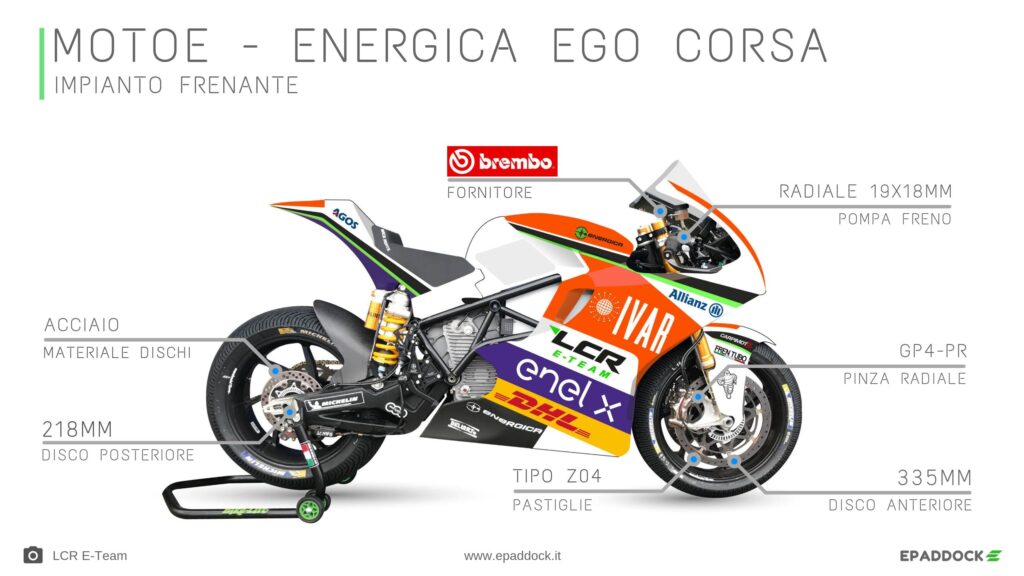
The parameters that monitor the use of the brakes and which are recorded by the data acquisition system are: brake oil circuit pressure (indicates how much braking force is applied) both front and rear, the speed and deceleration of the bike and the combination in the use of front and rear brake (here the details of the data acquisition system of the MotoE). To these parameters, the temperature of the disks is added, which is detected through heat-absorbing paints applied to the external thickness of the disk. They are of three types and indicate when the disc temperature exceeds 410°C, 530°C and 610°C.
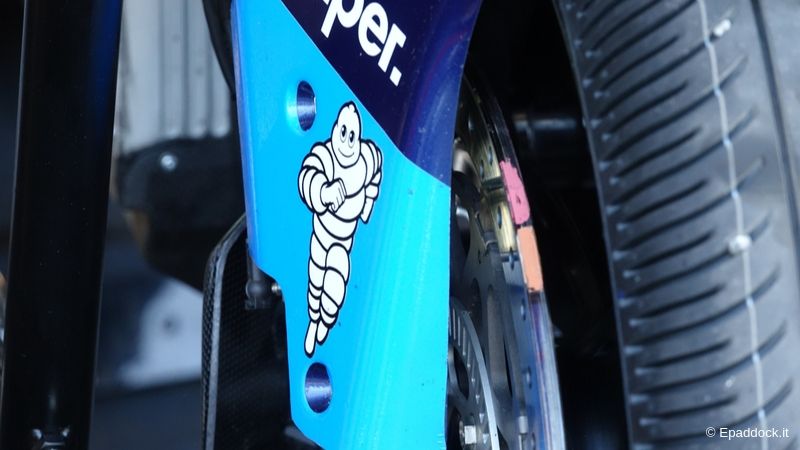
The front caliper is a machined monobloc item in aluminum, the GP4-PR model, and has four titanium pistons from 32-36 mm in diameter. It is the caliper already used in the MotoGP championship with steel discs until the 2017 season, when such discs were used in case of rain. An extremely important parameter for the brake calipers is the temperature, which must not exceed the 200°C in operation. Above this threshold their stiffness decreases and therefore the performance of the entire braking system. The monitoring of this parameter is done through special graduated stickers applied to the inner part of each clamp.
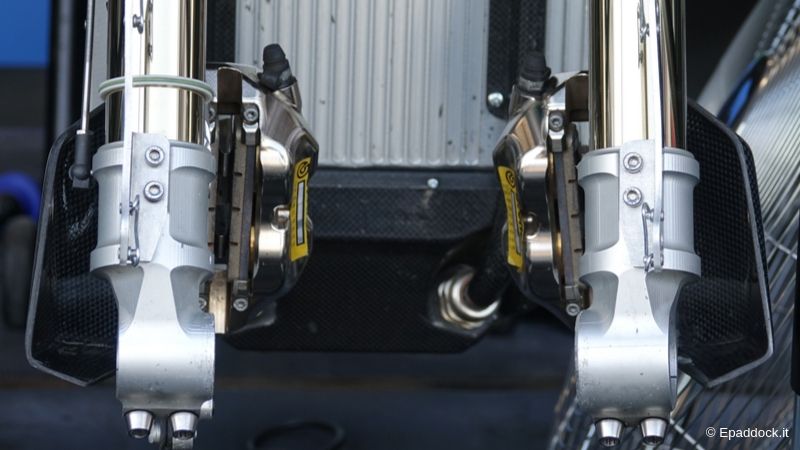
The riders of the MotoE also run in other champinships and some of them are used to using the rear brake on the handlebar. Since the MotoE doesn't have the clutch, the left handlebar is free, so some riders asked to have the rear brake control lever there. Brembo supplied the 14RCS model with a double-set (a gradual and a faster one). The footboard control has remained and the rear caliper is controlled by the device on which the rider exerts more pressure (the lever on the handlebar or the one on the footrest).
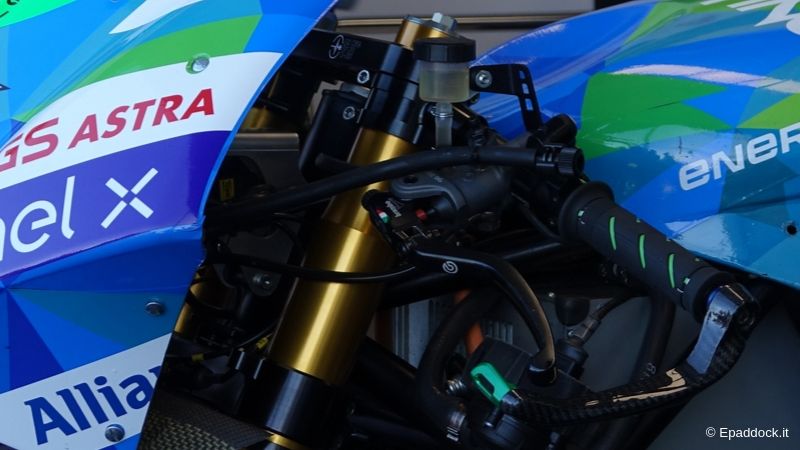
Since the Austrian GP, carbon air conveyors appeared on the front wheel to increase the cooling flow to the brakes (supplied by the German Motocoach). These components are visible in the below photo, mounted on the bike of Josh Hook of the Octo Pramac team.
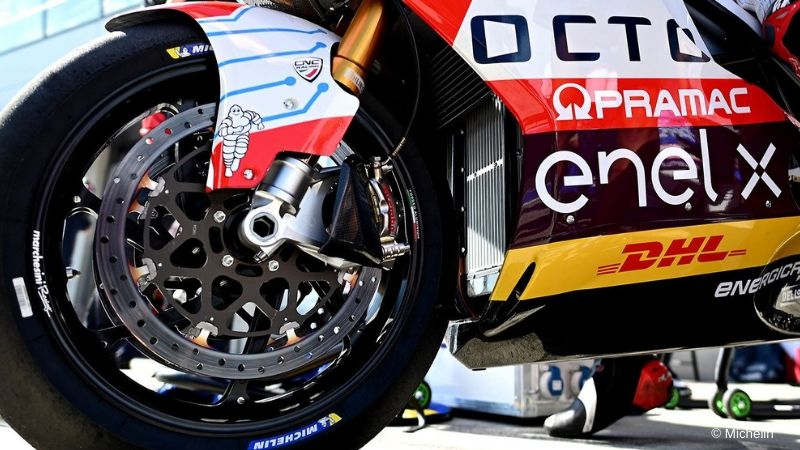
For more details on the Brembo braking system for the MotoE, you can consult the section "MotoE - Braking system".













